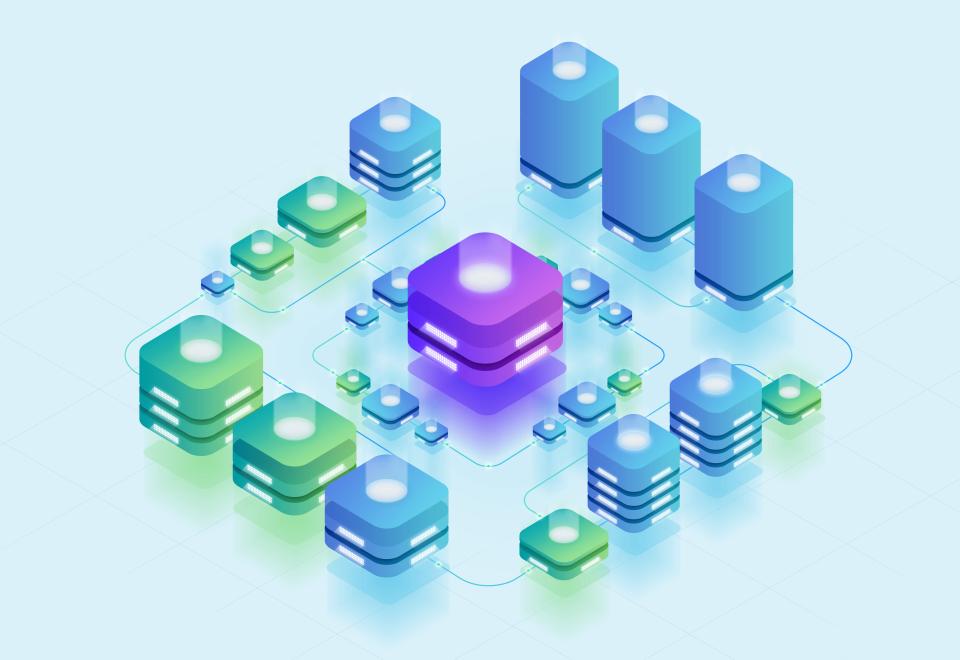The digital gold rush is ON. Global e-commerce sales are rocketing towards an astounding $8.3 trillion by 2025, according to projections from ClearlyPayments. Are you ready to stake your claim? Or will you be left in the dust, wondering why your online store isn't making the cut?
The brutal truth? Your e-commerce platform is the bedrock of your online empire. Choose wisely, and you build a fortress of profit. Choose poorly, and watch your dreams crumble. This isn't just about picking software; it's about laying the foundation for your brand's perception, your customer's journey, and ultimately, your sales. The decision you make echoes for years.
This guide isn't another boring list. We're diving deep, dissecting the leading e-commerce platforms. We'll focus relentlessly on what truly matters: optimized store design and features that actually drive conversions. At CaptivateClick, we've spent over 15 years in the trenches, helping businesses like yours build captivating, high-converting online stores. We know the platform is just the launchpad; exceptional design and strategic marketing are the rocket fuel. Let's get started on comparing top e-commerce platforms for optimized store design.
Why Your E-Commerce Platform Choice is Crucial for Design and Conversions
Think your platform choice is a minor detail? Think again. It's the very stage upon which your customer's experience plays out. A clunky, restrictive platform strangles your creativity, forcing your brand into a cookie-cutter mold. But a flexible, powerful platform? That’s your ticket to a user interface (UI) and user experience (UX) that wows visitors and keeps them coming back. Shockingly, Volusion research reveals that 88% of online shoppers will abandon a site after a bad user experience – a costly mistake you can't afford.
Speed. Kills. Or in this case, lack of speed kills conversions. Your store's performance is directly tied to your platform's capabilities and how well it's optimized. Consider this: sites loading in just 1 second see conversion rates 2.5 times higher than sites taking 5 seconds to load, as data from Portent highlights. Every. Second. Counts. This isn't just about pleasing impatient customers; it's a major SEO ranking signal too.
Beyond looks and speed, what about the tools that turn browsers into buyers? We're talking abandoned cart recovery, smart product recommendations, and the ability to A/B test your way to higher profits. Some platforms offer these as built-in treasures, while others make you hunt through app stores. And what about tomorrow? Your business will grow. Your platform must be ready to scale with you, not hold you back. This is about future-proofing your success and ensuring your store design optimization efforts aren't wasted on a system that can't keep up with your conversion focused e-commerce ambitions.
Key Factors for Evaluating E-Commerce Platforms
So, what separates the contenders from the pretenders? It’s not just one shiny feature. It’s a constellation of critical factors that determine if a platform can truly deliver an optimized store design and skyrocket your conversions.
Design Flexibility & Customization
Your store's design is your digital handshake. Does the platform offer a wide array of high-quality themes? More importantly, how easily can you bend those themes to your will? Look for intuitive drag-and-drop editors for quick changes, but also demand access to the underlying code for deep, unique customization. And in a world where mobile commerce accounts for 70% of transactions, flawless mobile responsiveness isn't a luxury; it's a baseline requirement.
Performance & Reliability
An "Open for Business" sign means nothing if your digital doors are constantly jammed. Investigate the platform's hosting capabilities (if it's a hosted solution) and look for concrete uptime guarantees. For instance, Shopify boasts 99.9% uptime across its services, a crucial factor for consistent sales. Page load speed potential is paramount; a sluggish site is a sales graveyard. You need a platform that supports your efforts in achieving those critical 1-2 second load times.
Conversion Optimization Features
This is where the rubber meets the road. Does the platform arm you with built-in marketing tools – email integration, SEO controls, discount engines? Is the checkout process a seamless dream or a frustrating nightmare for your customers? You need robust analytics and reporting to understand what's working and what's not. Crucially, can it integrate with powerful third-party Conversion Rate Optimization (CRO) tools to take your sales to the next level? For example, WooCommerce's compatibility with Google Analytics is a big plus for tracking.
Ease of Use (for Store Owners)
You're an entrepreneur, not necessarily a coding wizard. The platform's admin panel should be intuitive, making product management, inventory control, and order fulfillment straightforward. The less time you spend wrestling with the backend, the more time you have to grow your business.
Pricing & Fees
The price tag matters, but so does the value. Understand the monthly subscription costs, but dig deeper. Are there transaction fees that eat into your profits? What are the costs for essential themes, apps, and add-ons? A comprehensive pricing comparison like the one from WixVariants can reveal that a "free" platform might have significant hidden costs.
SEO Capabilities
If customers can't find you, they can't buy from you. Your platform must be an SEO ally. Demand customizable URLs, meta tags, and image alt text. Automatic sitemap generation and seamless blog integration are non-negotiable for content marketing and search visibility. BigCommerce, for example, offers SEO-friendly URLs and automated redirects out of the box.
Integrations & App Ecosystem
No platform is an island. It needs to play well with others. Check for seamless integrations with essential payment gateways, shipping solutions, marketing automation tools, and accounting software. A rich app ecosystem, like Shopify's extensive app store detailed by LiteExtension, can extend functionality dramatically, allowing you to tailor the platform to your precise needs.
Support & Community
When you hit a snag (and you will), who ya gonna call? Reliable, responsive customer support is vital. Look for multiple channels of support – phone, email, chat – and assess their quality. Active community forums and comprehensive documentation can also be lifesavers, providing quick answers and shared wisdom.
Deep Dive: Comparing Top E-Commerce Platforms
Alright, let's get down to brass tacks. You want to know which platform will give you that killer optimized store design and turn your website into a conversion machine. We're putting the titans of e-commerce under the microscope.
Shopify
Shopify. You've heard the name. It's the popular kid, the go-to for millions, and for good reason. It’s a Software-as-a-Service (SaaS) behemoth, renowned for its user-friendliness, making it a darling for startups and small to medium businesses eager for a quick launch.
When it comes to design, Shopify offers a vast theme store, providing a fantastic starting point. For beginners, customizing these themes is relatively straightforward. However, if you crave truly unique, deep customization, you'll need to get your hands dirty with Liquid, Shopify's templating language, or hire someone who can. PageFly notes that Shopify's 2025 features include AI automation, which could further streamline design and operational tasks. Performance is generally robust since Shopify handles all the hosting headaches for you.
Conversion is king on Shopify, largely thanks to its colossal app store. Need advanced pop-ups, loyalty programs, or sophisticated analytics? There's an app for that. In fact, Uptek reports that a staggering 87% of Shopify merchants leverage apps to enhance conversion rates, with some apps boosting conversions by as much as 250%. Built-in abandoned cart recovery is another powerful tool in its arsenal. Pricing is tiered, typically ranging from $39 to $399 per month according to PageFly, plus transaction fees if you don't use Shopify Payments. SEO-wise, it's solid out-of-the-box, though some advanced technical SEO maneuvers can be a bit restricted.
- Pros: Unbeatable ease of use, massive app ecosystem, reliable performance, excellent for quick setup.
- Cons: Transaction fees (unless using Shopify Payments), customization can require coding (Liquid), advanced SEO can be limited.
- Best Suited For: Startups, SMBs, dropshippers, businesses prioritizing speed to market and a user-friendly interface.
WooCommerce (WordPress)
If Shopify is the polished, all-in-one solution, WooCommerce is the infinitely customizable powerhouse, living as an open-source plugin within the WordPress universe. This means if you love WordPress, or your business thrives on content, WooCommerce could be your champion. Its flexibility is its greatest strength.
Design possibilities with WooCommerce are virtually limitless. You have access to thousands of WordPress themes, including over 3,702 WooCommerce-specific themes found across ThemeForest and WordPress.org, plus powerful page builders. This freedom, however, comes with a steeper learning curve. Achieving a truly optimized store design often requires more technical know-how or the help of a developer. Performance is entirely in your hands; it depends heavily on your choice of hosting, theme, and the number (and quality) of plugins you install. Active performance optimization is not optional here; it's essential.
For conversion features, the WordPress and WooCommerce plugin ecosystem is a vast ocean of possibilities. Whatever you can dream up, there's likely a plugin for it, from intricate discount rules to advanced analytics. The core WooCommerce plugin is free, but don't let that fool you. Costs for quality hosting, premium themes, essential paid plugins, and potential development work can add up quickly, as WixVariants points out in their pricing guide. SEO is where WooCommerce, powered by WordPress, truly shines. With plugins like Yoast SEO, its potential for search engine dominance is excellent, a fact underscored by OptinMonster's WooCommerce SEO guide.
- Pros: Unmatched customization, open-source (free core plugin), huge plugin/theme selection, strong SEO capabilities, integrates seamlessly with WordPress content.
- Cons: Steeper learning curve, performance depends on your setup, costs can escalate with hosting/plugins/development, requires more hands-on management.
- Best Suited For: Businesses already using WordPress, those needing deep customization, content-heavy e-commerce sites, users comfortable with a more technical setup.
BigCommerce
BigCommerce positions itself as a robust SaaS platform with a keen eye on scalability and a wealth of built-in features. It aims to give growing businesses and even B2B players the tools they need without an over-reliance on third-party apps, making it a strong contender for conversion focused e-commerce.
Design-wise, BigCommerce offers a good selection of modern themes, and its Stencil theme framework allows for significant customization if you have some technical skills. While perhaps not as instantly intuitive for absolute beginners as Shopify, it provides a solid foundation. Performance is generally reliable as it's a hosted solution, and Business Focus Magazine highlights BigCommerce's impressive 100% uptime during peak sales periods like Cyber Week, a testament to its stability.
Where BigCommerce truly flexes its muscles is in its native feature set. Many tools that require apps on other platforms, like robust product options, are built right in. A major plus: BigCommerce charges no transaction fees on any of its plans, a significant cost saving noted by WixVariants. Its SEO capabilities are also strong, with features like microdata for rich snippets and customizable URLs praised by DropInBlog. Pricing is tiered, similar to Shopify, with plans often based on annual sales volume.
- Pros: Rich built-in feature set (less app dependency), no transaction fees on any plan, strong native SEO, highly scalable, good for B2B.
- Cons: Can have a slightly steeper learning curve than Shopify for some, theme customization might require Stencil knowledge.
- Best Suited For: Fast-growing online stores, B2B e-commerce, businesses wanting comprehensive features out-of-the-box, merchants looking to avoid transaction fees.
Magento / Adobe Commerce
When your e-commerce ambitions are colossal, and your needs are complex, Magento (now Adobe Commerce for its enterprise version) enters the conversation. This is the heavyweight champion for large enterprises, offering unparalleled power and flexibility, but it demands significant resources.
Design and customization with Magento are virtually limitless – if you have the development team to wield its power. It's not for the faint of heart or the small startup. Achieving an optimized store design here is a serious undertaking, requiring expert developers. Performance can be exceptional, capable of handling massive traffic and product catalogs, but this too hinges on expert configuration and robust hosting.
Magento is packed with sophisticated conversion features, from advanced segmentation to AI-driven product recommendations, especially in the Adobe Commerce iteration, which Magestore notes includes live search and seller-assisted shopping tools. The open-source version of Magento is technically free, but the total cost of ownership – development, high-performance hosting, ongoing maintenance, and premium extensions – is substantial. Adobe Commerce is enterprise-level pricing, often starting at upwards of $22,000 per year according to WixVariants. SEO capabilities are top-tier, but again, require expert setup to fully leverage.
- Pros: Extremely powerful and flexible, highly scalable for enterprise needs, vast feature set, robust for complex requirements.
- Cons: Very complex, requires significant development resources and budget, steep learning curve, high total cost of ownership.
- Best Suited For: Large enterprises, businesses with highly complex product catalogs or custom integration needs, companies with dedicated development teams and substantial budgets.
At-a-Glance: E-Commerce Platform Comparison Table
To help you see the forest for the trees, here’s a quick rundown of how these platforms stack up across key areas. Remember, "Best" is subjective and depends entirely on YOUR specific needs.
| Feature | Shopify | WooCommerce (WordPress) | BigCommerce | Magento / Adobe Commerce |
|---|---|---|---|---|
| Design Flexibility | Good (Liquid for advanced) | Excellent (Themes/Page Builders) | Good (Stencil framework) | Excellent (Requires developers) |
| Ease of Use | Excellent | Moderate (WordPress familiarity helps) | Good | Difficult (Needs experts) |
| Built-in CRO | Good (Abandoned Cart, Apps crucial) | Moderate (Relies heavily on plugins) | Very Good (Many features native) | Excellent (Enterprise-level tools) |
| SEO Capabilities | Good | Excellent (With WordPress & plugins) | Very Good | Excellent (With expert config) |
| Scalability | Good to Very Good | Good (Depends on hosting/optimization) | Very Good to Excellent | Excellent (Enterprise grade) |
| Typical Price Range | $39-$399/mo + fees (Source: PageFly) |
Free core + Hosting/Themes/Plugins (Source: WixVariants) | $29-$299+/mo (No transaction fees) (Source: WixVariants) |
$22k+/yr (Adobe Commerce) + Dev Costs (Source: WixVariants) |
Note: Prices are indicative and can vary based on specific plans, add-ons, and custom requirements.
Making the Right Choice for YOUR Business
Feeling overwhelmed? Don't be. The truth is, there's no single "best" e-commerce platform that fits every business like a glove. The ideal choice hinges entirely on your unique situation: your budget, your technical comfort zone, your grand vision for growth, and the specific design and conversion goals you're chasing. As Volusion emphasizes, a great user experience drives loyalty, and your platform is key to that.
To cut through the noise, ask yourself these hard questions. What's your real budget, not just for the monthly fee, but for themes, apps, and potential development help? How critical is a completely unique, bespoke design versus getting to market quickly with a professional, effective template? What level of technical wizardry do you or your team possess – are you comfortable tinkering under the hood, or do you need something that just works?
And most importantly, what are your non-negotiable conversion features? Do you need sophisticated B2B quoting, or is a simple, effective abandoned cart saver your top priority? How big do you dream? Consider where you want your business to be in one, three, or even five years. Your platform choice today needs to support that future growth, especially considering that Portent's research underscores prioritizing speed for mobile shoppers, a critical factor for any scaling e-commerce venture. This e-commerce platform comparison is your starting point for these crucial internal discussions.
Beyond the Platform: How CaptivateClick Elevates Your E-Commerce Success
Listen, choosing the right platform is a giant leap forward. But it's just that – a leap. Even the most feature-rich, user-friendly platform is only as good as the strategy and execution behind it. To truly achieve an optimized store design that captivates visitors and a conversion funnel that prints money, you need expertise. That's where CaptivateClick storms onto the scene. Even Shopify's own help center acknowledges the need for expert theme customization beyond stock options.
At CaptivateClick, we live and breathe e-commerce. We don't just pick a theme; we craft stunning, user-centric designs tailored to your unique brand and target audience, whether you choose Shopify, WooCommerce, BigCommerce, or another leading platform. Our approach to innovative e-commerce web design trends ensures your store doesn't just look good, it performs. But a pretty store that doesn't sell is just an expensive hobby. Our expert conversion optimization techniques go far beyond basic platform features. We meticulously implement A/B testing, refine user journeys, and optimize every single touchpoint to transform casual browsers into fiercely loyal customers.
And what about the engine under the hood? We ensure your store is lightning-fast, utterly secure, and perfectly tuned for search engines. Our deep dives into technical optimization best practices for faster websites and understanding the impact of technical optimization on SEO rankings lay a rock-solid foundation for visibility and explosive growth. Our international team brings a treasure trove of global experience, crafting solutions that resonate worldwide while also understanding the nuances needed for local success, which can be further enhanced with advanced local SEO strategies if your business has a physical footprint.
Conclusion
You're standing at a crossroads. Choosing the right e-commerce platform is one of the most critical decisions you'll make for your online business. It's the first, vital step towards carving out your slice of that massive, multi-trillion dollar e-commerce pie ClearlyPayments forecasts. Understanding the intricate dance between design flexibility, raw performance, and powerful conversion optimization features is no longer optional – it's essential for survival and triumph.
Armed with this e-commerce platform comparison, you're now far better equipped to dissect the options and make an informed, strategic decision that aligns with your vision. You have the insights to look beyond the marketing hype and focus on what truly fuels growth. This knowledge empowers you to select a foundation that won't just support your business today, but will scale with your ambitions for tomorrow.
Ready to stop dreaming and start selling? Ready to build an e-commerce store that doesn't just look stunning but also drives serious, consistent sales? The seasoned experts at CaptivateClick are primed and ready to help. Contact us today for a no-obligation consultation on your e-commerce project. Let's discuss how we can bring your vision to life with an optimized store design meticulously engineered for maximum conversions. Your future self will thank you.













